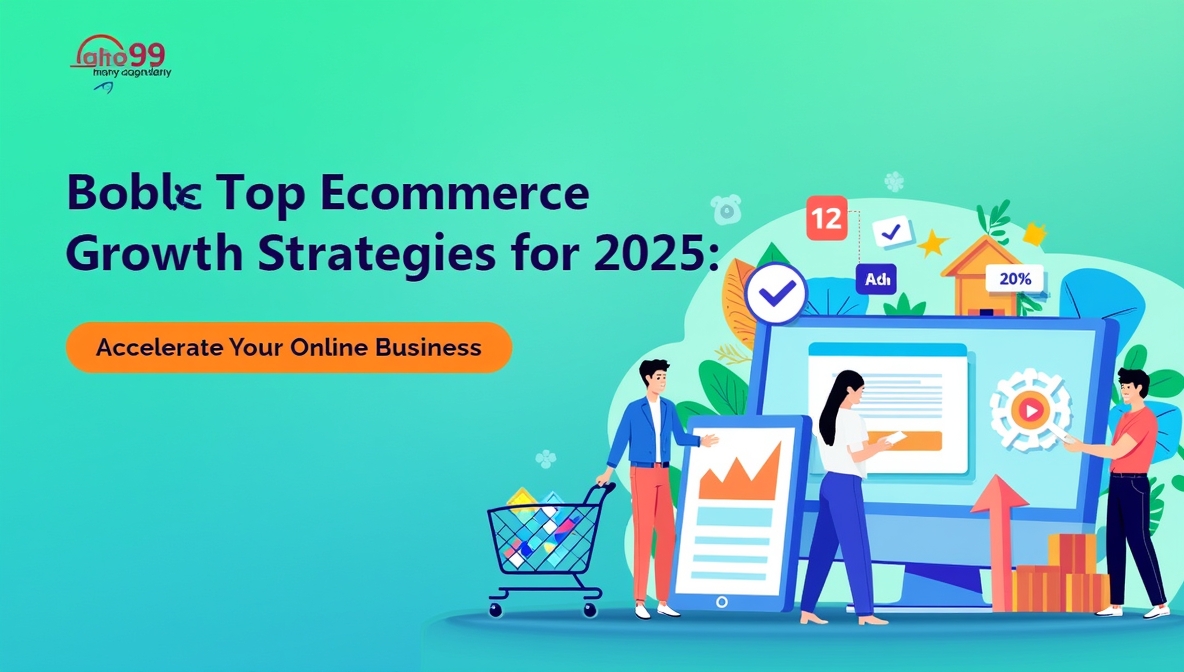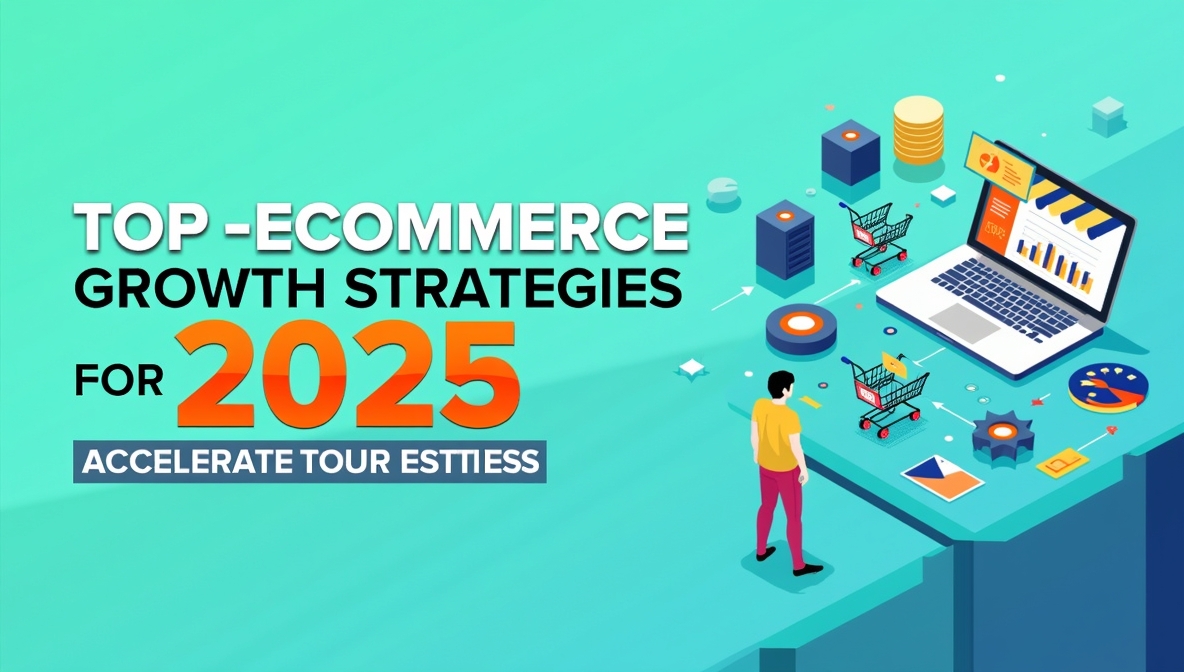The eCommerce industry is expected to continue its explosive growth in 2025, but as competition increases, standing out from the crowd becomes more challenging. Whether you’re just starting an online store or looking to scale an existing one, implementing the right growth strategies is key to success.
This guide highlights the most effective eCommerce strategies for 2025 that will help you increase sales, improve customer experience, and boost your brand’s presence.
1. Optimize for Mobile Shopping
Mobile commerce continues to dominate as more consumers use smartphones to shop online. In 2025, ensuring your online store is optimized for mobile is essential to capturing the growing mobile shopping market.
To optimize your eCommerce store for mobile:
Responsive Design: Your website should automatically adjust to fit any screen size. Test your design across different devices to ensure it works well on mobile phones and tablets.
Simplify Navigation: Mobile users want quick access to products and information. Keep your navigation clear and easy to use with minimal clicks.
Fast Load Time: Mobile users tend to abandon slow-loading websites. Use tools like Google PageSpeed Insights to ensure your site loads quickly.
Mobile optimization isn’t just an option — it’s a necessity for staying competitive in the eCommerce space.
2. Implement Personalization to Drive Conversions
In 2025, consumers expect a personalized shopping experience. Personalized recommendations, targeted promotions, and tailored content not only improve the customer experience but also increase conversions.
Here’s how to personalize your eCommerce store:
Personalized Product Recommendations: Use AI and machine learning to suggest products based on a customer’s browsing history or previous purchases.
Dynamic Pricing: Offer personalized discounts or deals based on the customer’s purchasing behavior, location, or loyalty.
Email Marketing Segmentation: Send personalized emails that address specific customer interests, past purchases, or abandoned carts.
Personalization helps you build stronger relationships with customers and can lead to higher conversion rates.
3. Invest in Omnichannel Retailing
Omnichannel retailing refers to integrating both online and offline channels to provide a seamless customer experience. Customers want to shop across different platforms — desktop, mobile, in-store — and expect a consistent experience no matter where they interact with your brand.
To implement omnichannel strategies:
Unified Customer Data: Use a centralized platform to track customer interactions across various touchpoints, ensuring a seamless experience whether they’re browsing online or shopping in-store.
Buy Online, Pick Up In Store (BOPIS): If you have a physical location, offer customers the option to purchase products online and pick them up at your store, providing added convenience.
Social Commerce: Leverage platforms like Instagram, Facebook, and Pinterest to sell directly to consumers through social media.
By offering an omnichannel experience, you create multiple pathways for customers to engage with your brand and increase their lifetime value.
4. Leverage Artificial Intelligence (AI) for Enhanced Customer Service
AI is revolutionizing eCommerce customer service in 2025. From AI chatbots to automated responses, artificial intelligence can enhance customer interactions, streamline support, and improve overall satisfaction.
How AI can enhance customer service:
AI Chatbots: Use AI-powered chatbots to provide 24/7 customer service. These bots can answer common questions, guide customers through product selections, and even help with the checkout process.
Automated Order Tracking: AI can send personalized updates about order status and estimated delivery times to customers, improving the post-purchase experience.
Sentiment Analysis: AI tools can analyze customer feedback and social media mentions to gauge sentiment and provide actionable insights for improving customer experience.
AI helps reduce response times, increase efficiency, and enhance customer satisfaction — all crucial for growing your eCommerce business.
5. Focus on Customer Retention
While acquiring new customers is essential, retaining existing customers is equally important. In 2025, focusing on customer retention strategies will help you build brand loyalty and increase repeat sales.
Key strategies for customer retention:
Loyalty Programs: Reward your repeat customers with discounts, exclusive access to new products, or points that can be redeemed for future purchases.
Personalized Post-Purchase Experience: Send personalized thank-you emails, product recommendations, and special offers after customers make a purchase.
Customer Feedback and Reviews: Actively seek customer feedback and reviews to improve your products and services. Responding to feedback shows you value your customers’ opinions and helps build trust.
Customer retention leads to increased lifetime value, and happy customers are more likely to refer others to your store.
6. Offer Subscription Models
Subscription-based eCommerce is on the rise in 2025, and many businesses are tapping into the recurring revenue model. Offering subscription services provides a steady stream of income and helps you build a loyal customer base.
Types of subscription models to consider:
Product Subscription Boxes: Deliver curated products on a regular basis, such as beauty boxes, meal kits, or fitness gear.
Auto-Renewing Subscriptions: Offer products that customers need to reorder regularly, such as vitamins, pet supplies, or household items.
Exclusive Memberships: Provide exclusive access to premium content, special discounts, or limited-edition products for subscribers.
Subscriptions create predictable revenue and foster long-term relationships with your customers.
7. Streamline the Checkout Process
A complicated or lengthy checkout process can lead to abandoned carts and lost sales. In 2025, optimizing your checkout experience is essential to reducing friction and improving conversion rates.
Tips for a smoother checkout experience:
Guest Checkout: Allow customers to make purchases without forcing them to create an account.
Multiple Payment Options: Offer various payment methods, such as credit cards, PayPal, Apple Pay, and other popular digital wallets.
Progressive Disclosure: Instead of overwhelming customers with lengthy forms, break the checkout process into smaller, manageable steps.
A fast and simple checkout process increases conversions and reduces cart abandonment rates.
8. Expand Globally with International Shipping
In 2025, expanding your reach to international markets can significantly increase your eCommerce sales. Offering international shipping opens up new revenue streams and allows you to tap into a global customer base.
To successfully expand internationally:
Optimize for Global SEO: Use localized keywords and create region-specific landing pages to cater to different markets.
Custom Duties and Taxes: Be transparent about shipping costs, duties, and taxes to avoid surprises for international customers.
Local Payment Methods: Offer payment methods that are commonly used in the regions you’re targeting, such as Alipay for China or Klarna for Sweden.
Expanding globally allows your business to grow beyond borders, tapping into the potential of the global eCommerce market.
Conclusion
In 2025, the key to eCommerce growth lies in adopting innovative strategies that improve the customer experience, increase conversions, and expand your reach. By focusing on mobile optimization, personalization, omnichannel retail, AI, customer retention, and global expansion, you’ll be well-equipped to succeed in a highly competitive market.
With the right strategies and a customer-centric approach, your eCommerce business can thrive and reach new heights in 2025 and beyond.

